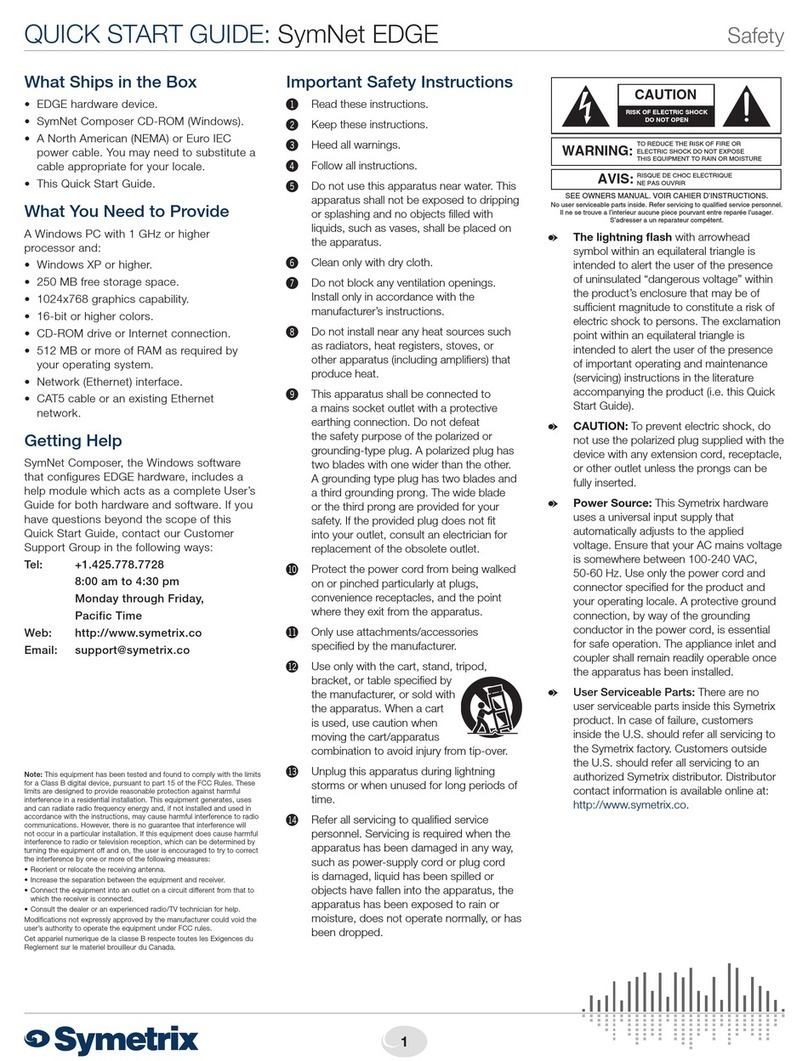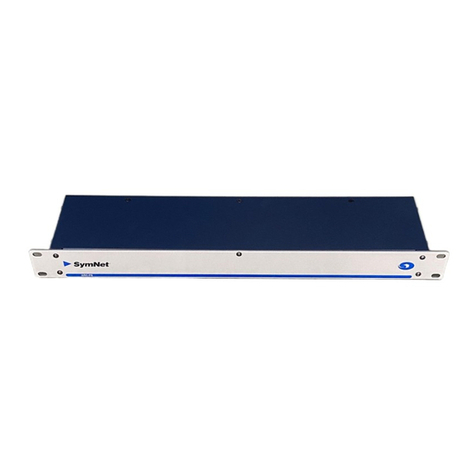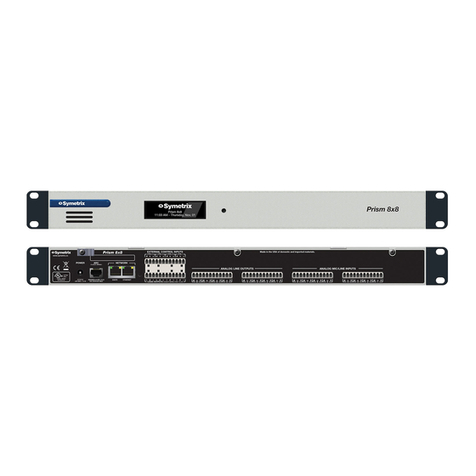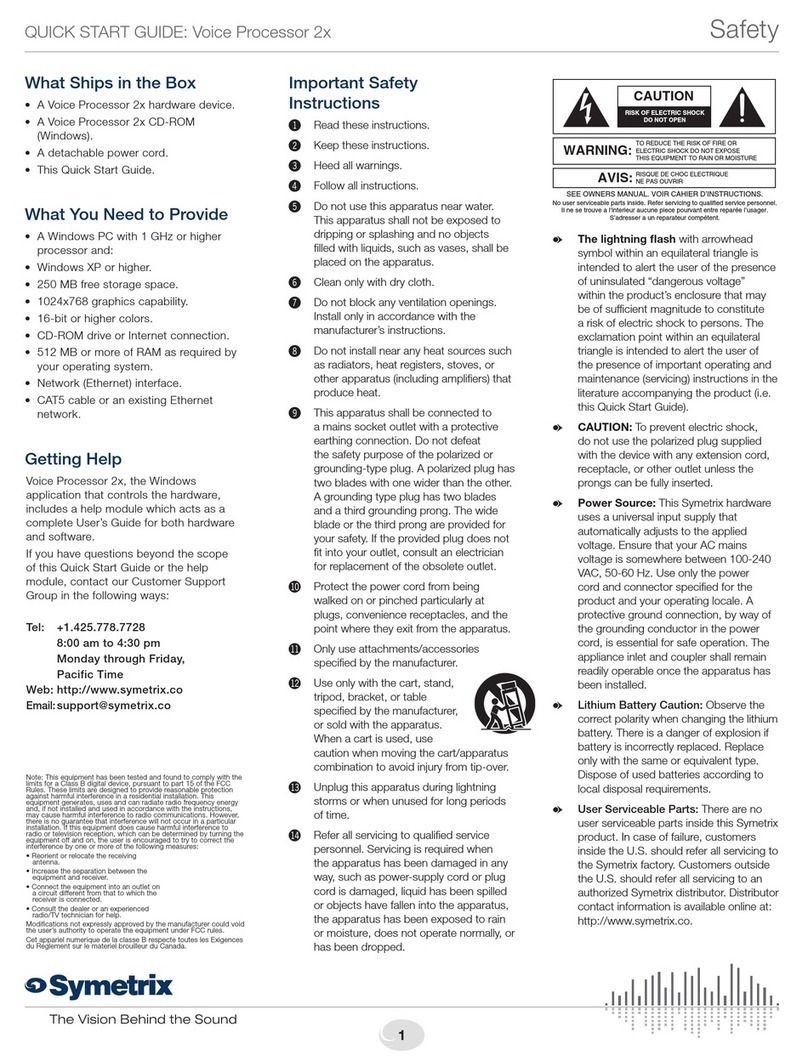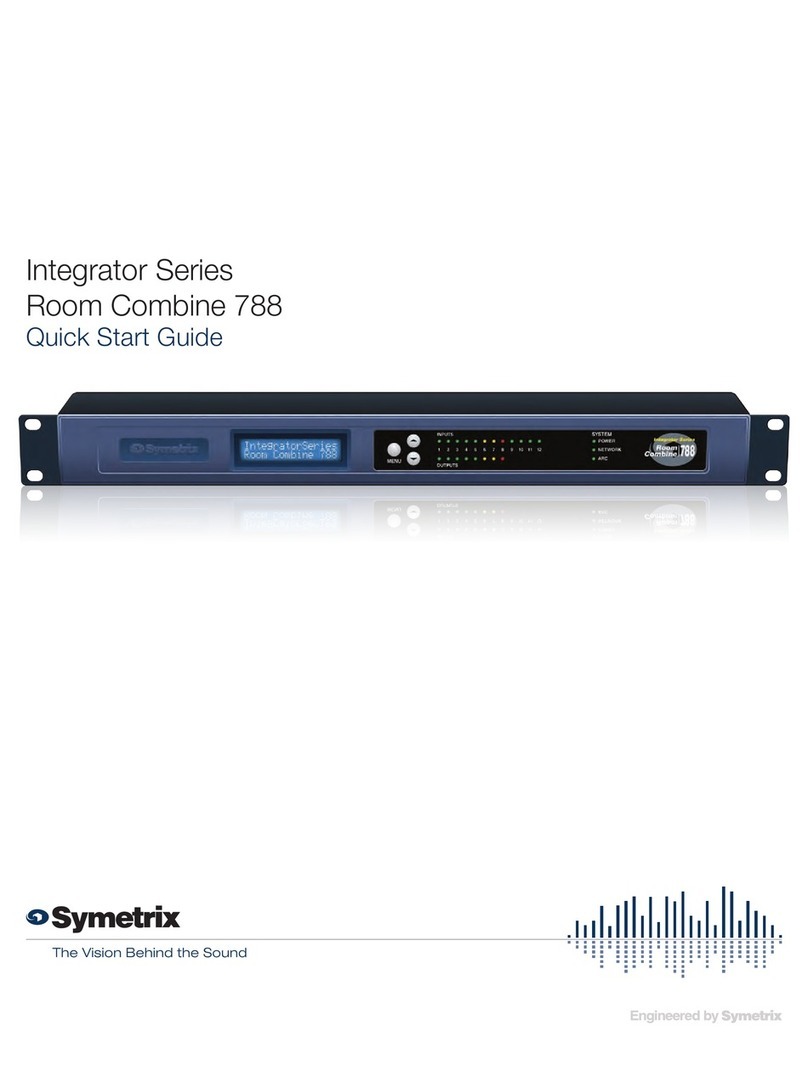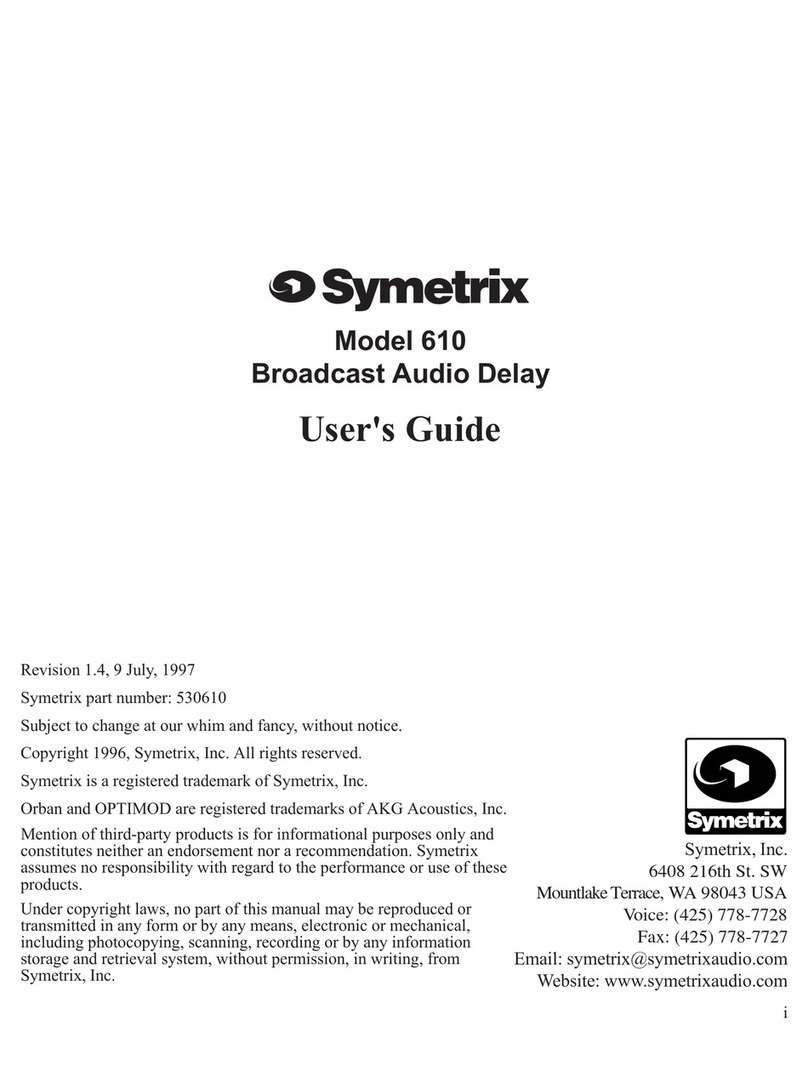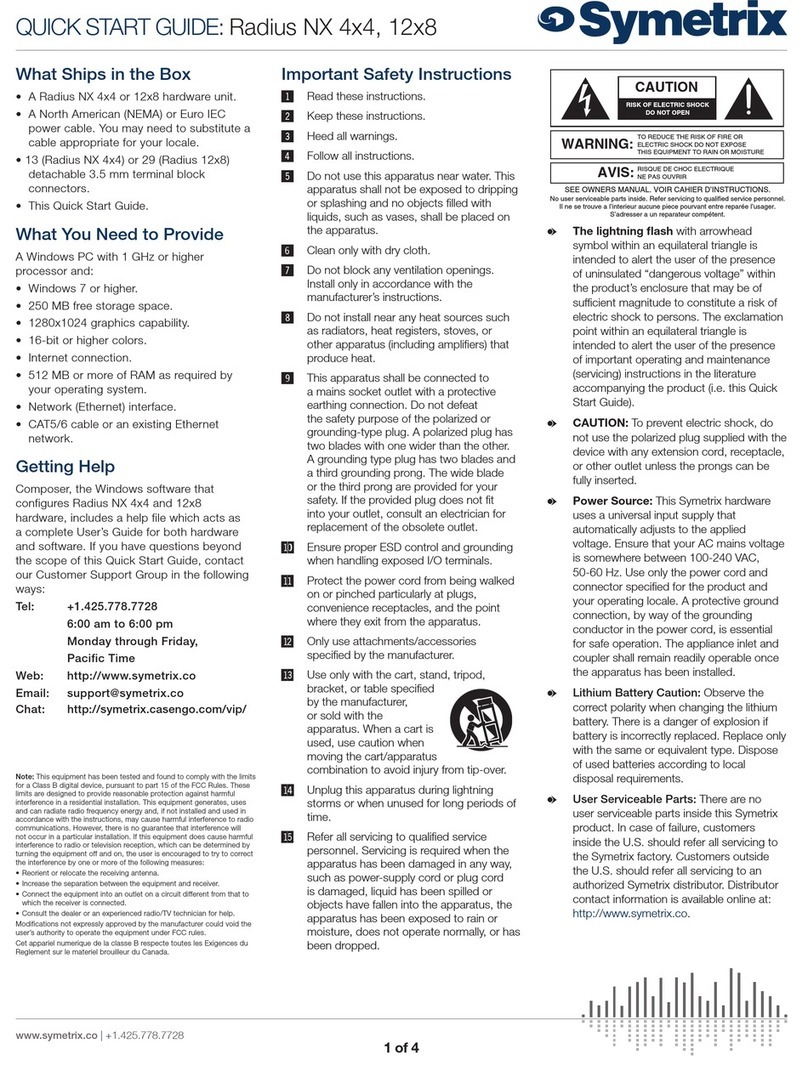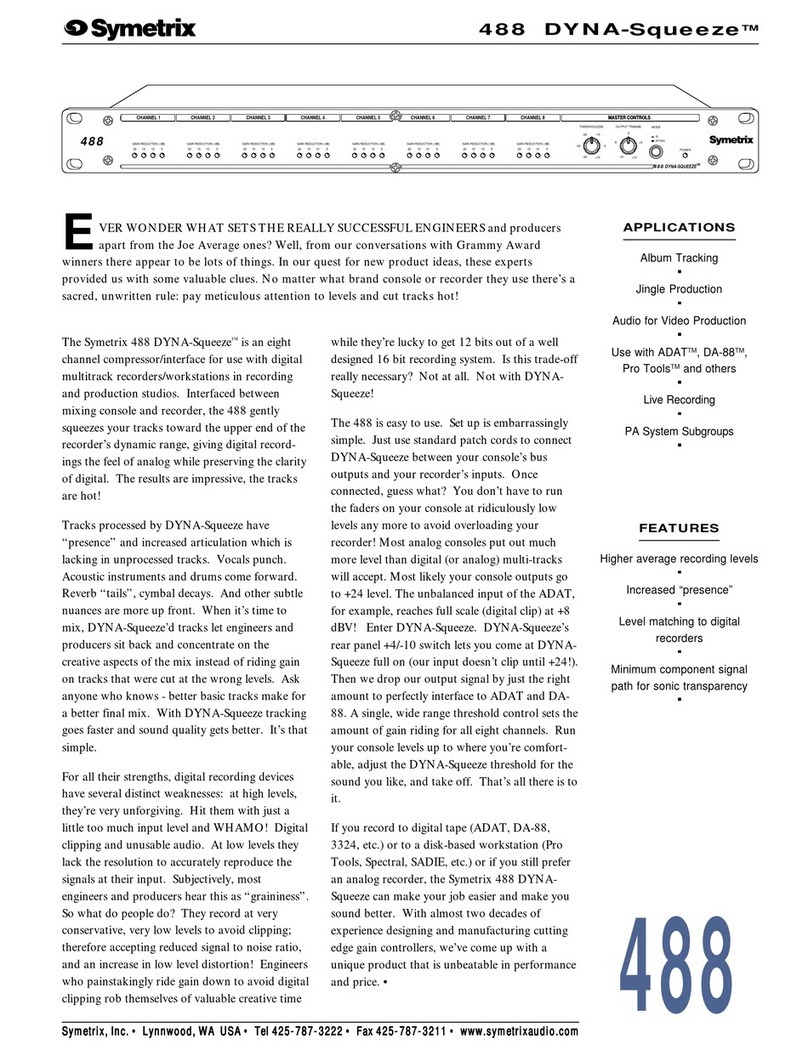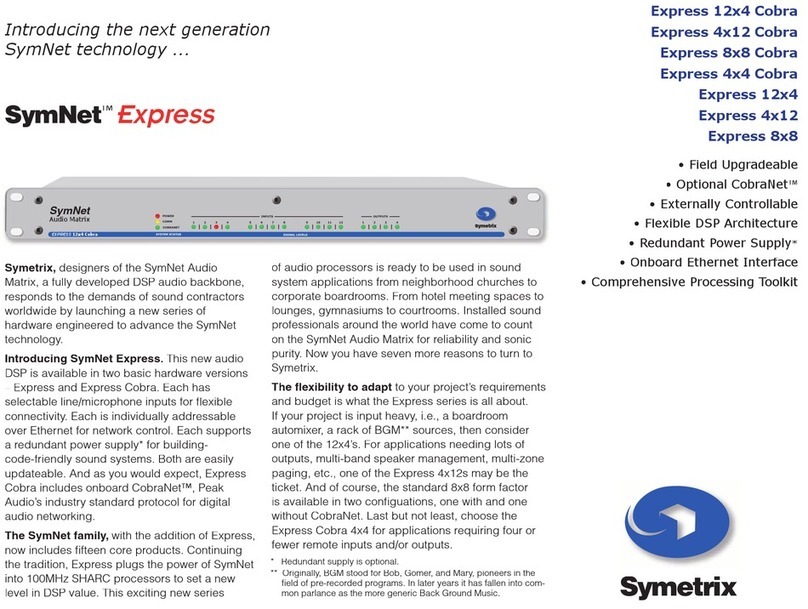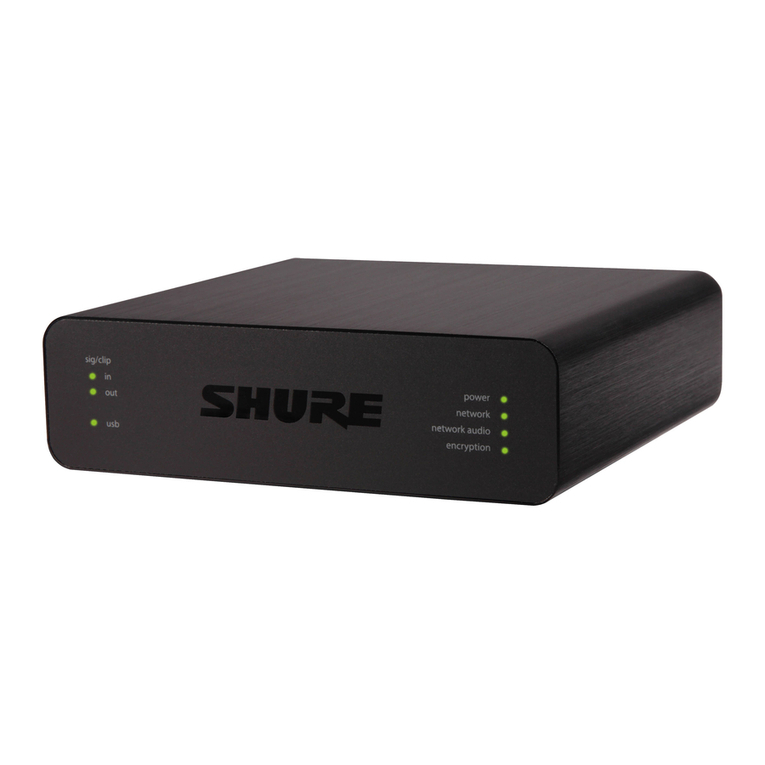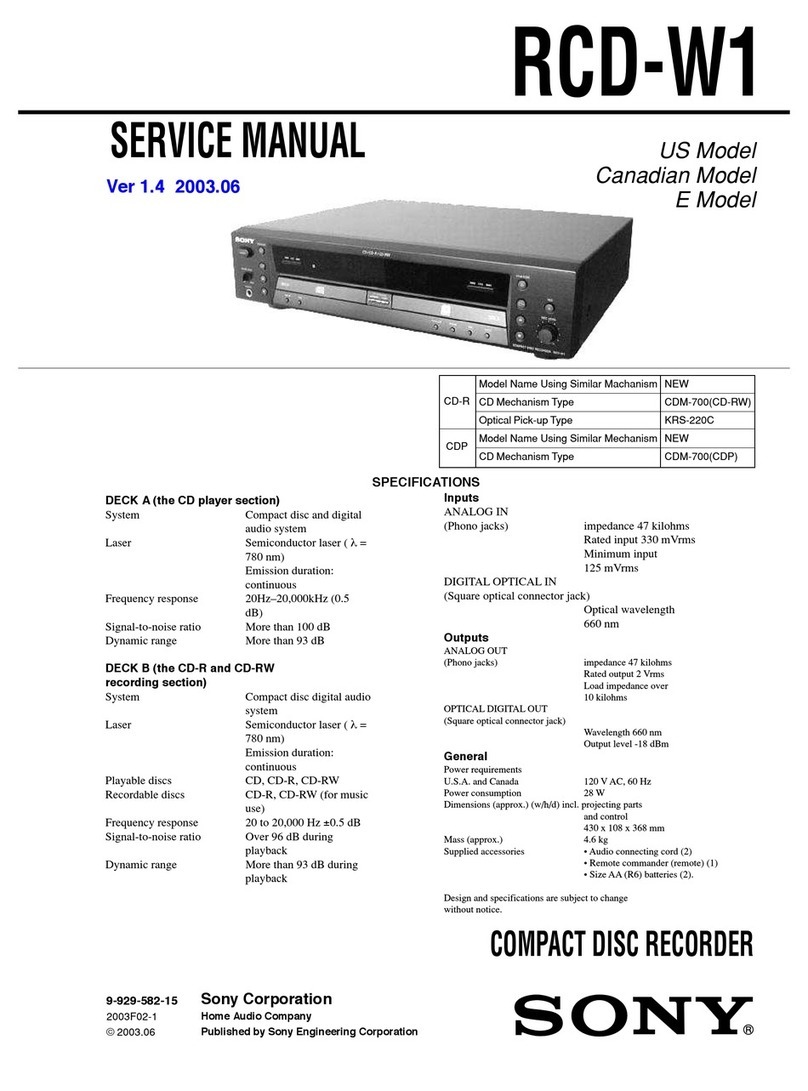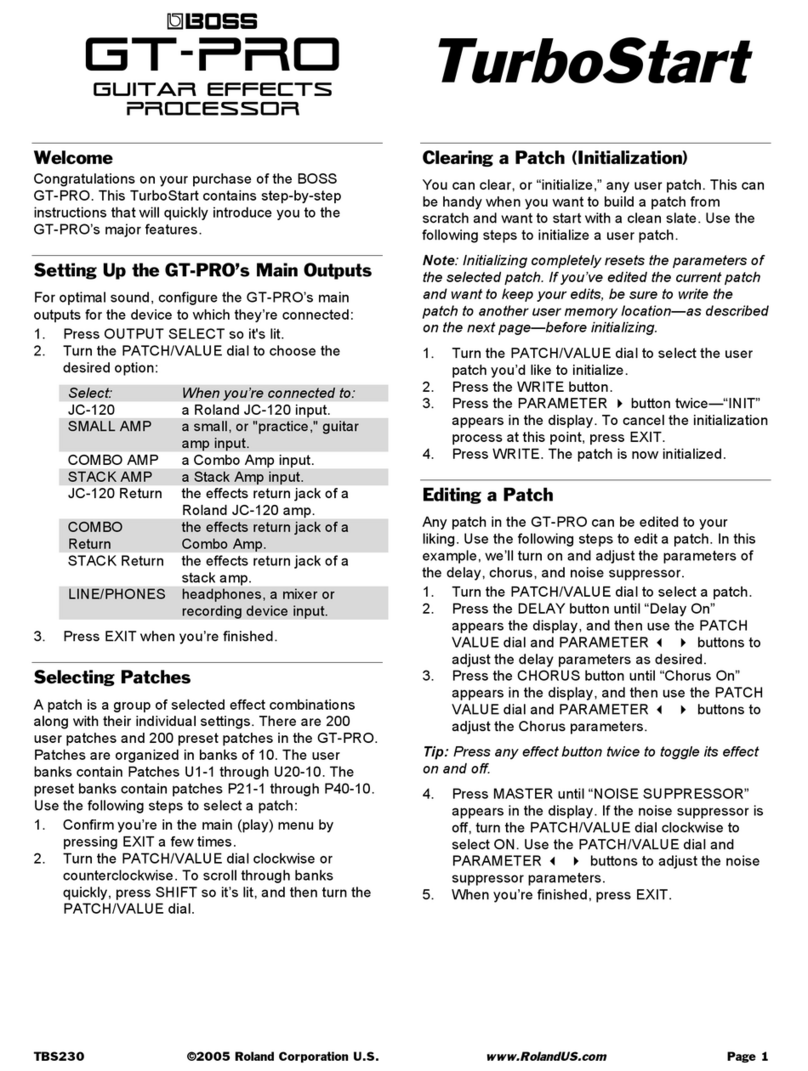
2
Operator Safety Summary Chapter 2
Terms
Several notational conventions are used in this
manual. Some paragraphs may use Note, Caution,
or Warning as a heading. Certain typefaces and
capitalization are used to identify certain words.
These are:
Note Identifies information that needs
extra emphasis. A Note generally
supplies extra information to help
you to better use the 421m.
Caution Identifies information that, if not
heeded, may cause damage to the
421m or other equipment in your
system.
Warning Identifies information that, if
ignored, may be hazardous to your
health or that of others.
CAPITALS Controls, switches or other markings
on the 421m s chassis.
Boldface Strong emphasis.
Equipment Markings
AVIS:
NE PAS OUVRIR
Il ne se trouve a l’interieur aucune piece pourvant entre reparée l’usager.
SEE OWNERS MANUAL. VOIR CAHIER D’INSTRUCTIONS.
S’adresser a un reparateur compétent.
RISQUE DE CHOC ELECTRIQUE
No user serviceable parts inside. Refer servicing to qualified service personnel
CAUTION
WARNING:
TO REDUCE THE RISK OF FIRE OR
ELECTRIC SHOCK DO NOT EXPOSE
THIS EQUIPMENT TO RAIN OR MOISTURE
DO NOT OPEN
RISK OF ELECTRIC SHOCK
The lightning flash with arrowhead symbol within an
equilateral triangle is intended to alert the user of the
presence of uninsulated dangerous voltage within
the product s enclosure that may be of sufficient
magnitude to constitute a risk of electric shock to
persons. The exclamation point within an equilateral
triangle is intended to alert the user of the presence of
important operating and maintenance (servicing)
instructions in the literature accompanying the
product (i.e. this manual).
Caution To prevent electric shock, do not use the
polarized plug supplied with the unit with
any extension cord, receptacle, or other
outlet unless the blades can be fully
inserted.
Important Safety Instructions
Please read and keep these instructions. Heed
and follow all warnings and instructions.
Install in accordance with the manufacturer s
instructions.
Power Source This product is intended to
operate from a power source that does not apply
more than 250V rms between the power supply
conductors or between either power supply
conductor and ground. A protective ground
connection, by way of the grounding conductor
in the power cord, is essential for safe operation.
Grounding The chassis of this product is
grounded through the grounding conductor of
the power cord. To avoid electric shock, plug the
power cord into a properly wired receptacle
before making any connections to the product. A
protective ground connection, by way of the
grounding conductor in the power cord, is
essential for safe operation. Do not defeat the
safetypurpose of thegrounding plug. The
grounding plug has two blades and a third
grounding prong. The third prong is provided for
your safety. When the provided plug does not fit
your outlet, consult an electrician for replacement
of the obsolete outlet.
Danger from Loss of Ground If the protective
ground connection is lost, all accessible conduc-
tive parts, including knobs and controls that may
appear to be insulated, can render an electric
shock.
Proper Power Cord Use only the power cord
and connector specified for the product and your
operating locale. Use only a cord that is in good
condition.Protectthe power cord frombeing
walked on or pinched, particularly at plugs,
convenience receptacles, and the point where
they exit from the apparatus.
Proper Fuse The user accessible fuse is a part of
the IEC AC inlet connector. The fuseholder
accepts5 x 20mm diameter fuses. For117VAC
operation, the correct value is 0.25A, 250VAC,
standard. For 230VAC operation, the correct
value is 0.125A, 250VAC, standard.
OperatingLocation Do notoperate thisequip-
mentunder anyof thefollowing conditions:
explosive atmospheres, in wet locations, in
inclement weather, improper or unknown AC
mains voltage, or if improperly fused. Do not
install near any heat source such as radiators,
heat registers, stoves, or other apparatus
(including amplifiers) that produce heat. Unplug
this apparatus during lightning storms or when
unused for long periods of time.
Stay Out of the Box To avoid personal injury (or
worse), do not remove the product covers or
panels. Do not operate the product without the
covers and panels properly installed. Only use
accessories specified by the manufacturer. Clean
only with a damp cloth.
User-serviceable parts There are no user
serviceable parts inside the 421m. In case of
failure, refer all servicing to the factory. Servicing
is required when the 421m has been damaged in
any way, such as when a power supply cord or
plug is damaged, liquid has been spilled or
objects have fallen into the apparatus, the
apparatus has been exposed to rain or moisture,
does not operate normally, or has been dropped.
AVIS:
NE PAS OUVRIR
Il ne se trouve a l’interieur aucune piece pourvant entre reparée l’usager.
SEE OWNERS MANUAL. VOIR CAHIER D’INSTRUCTIONS.
S’adresser a un reparateur compétent.
RISQUE DE CHOC ELECTRIQUE
No user serviceable parts inside. Refer servicing to qualified service personnel.
CAUTION
WARNING:
TO REDUCE THE RISK OF FIRE OR
ELECTRIC SHOCK DO NOT EXPOSE
THIS EQUIPMENT TO RAIN OR MOISTURE
DO NOT OPEN
RISK OF ELECTRIC SHOCK
Operator Safety Summary Chapter 2
Terms
Several notational conventions are used in this
manual. Some paragraphs may use Note, Caution,
or Warning as a heading. Certain typefaces and
capitalization are used to identify certain words.
These are:
Note Identifies information that needs
extra emphasis. A Note generally
supplies extra information to help
you to better use the 421m.
Caution Identifies information that, if not
heeded, may cause damage to the
421m or other equipment in your
system.
Warning Identifies information that, if
ignored, may be hazardous to your
health or that of others.
CAPITALS Controls, switches or other markings
on the 421m’s chassis.
Boldface Strong emphasis.
The lightning flash with arrowhead symbol within
an equilateral triangle is intended to alert the user
of the presence of uninsulated “dangerous volt-
age” within the product’s enclosure that may be of
sufficient magnitude to constitute a risk of electric
shock to persons. The exclamation point within an
equilateral triangle is intended to alert the user of the
presence of important operating and maintenance
(servicing) instructions in the literature accom-
panying the product (i.e. this manual).
Caution
To prevent electric shock, do not use the polarized
plug supplied with the unit with any extension cord,
receptacle, or other outlet unless the blades can be
fully inserted.
Important Safety Instructions
Please read and keep these instructions. Heed
and follow all warnings and instructions.
Install in accordance with the manufacturer’s
instructions.
Power Source This product is intended to op-
erate from a power source that does not apply
more than 250V rms between the power supply
conductors or between either power supply
conductor and ground. A protective ground
connection, by way of the grounding conductor
in the power cord, is essential for safe opera-
tion.
Grounding The chassis of this product is
grounded through the grounding conductor of
the power cord. To avoid electric shock, plug
the power cord into a properly wired receptacle
before making any connections to the product.
A protective ground connection, by way of
the grounding conductor in the power cord,
is essential for safe operation. Do not defeat
the safety purpose of the grounding plug.
The grounding plug has two blades and a third
grounding prong. The third prong is provided
for your safety. When the provided plug does
not fit your outlet, consult an electrician for
replacement of the obsolete outlet.
Danger from Loss of Ground If the protec-
tive ground connection is lost, all accessible
conductive parts, including knobs and controls
that may appear to be insulated, can render an
electric shock.
Proper Power Cord Use only the power cord
and connector specified for the product and
your operating locale. Use only a cord that is
in good condition. Protect the power cord
from being walked on or pinched, particularly
at plugs, convenience receptacles, and the point
where they exit from the apparatus.
Proper Fuse The user accessible fuse is a part
of the IEC AC inlet connector. The fuseholder
accepts 5 x 20mm diameter fuses. For 117VAC
operation, the correct value is 0.25A, 250VAC,
standard. For 230VAC operation, the correct
value is 0.125A, 250VAC, standard.
Proper Microphone and Cable To prevent
hazard or damage ensure that only microphone
cables and microphones designed to IEC-268-
15A are connected.
Operating Location Do not operate this
equipment under any of the following condi-
tions: explosive atmospheres, in wet locations,
in inclement weather, improper or unknown
AC mains voltage, or if improperly fused.
Do not install near any heat source such as
radiators, heat registers, stoves, or other appa-
ratus (including amplifiers) that produce heat.
Unplug this apparatus during lightning storms
or when unused for long periods of time.
Stay Out of the Box To avoid personal injury
(or worse), do not remove the product covers
or panels. Do not operate the product without
the covers and panels properly installed. Only
use accessories specified by the manufacturer.
Clean only with a damp cloth.
User-serviceable parts There are no user
serviceable parts inside the 421m. In case
of failure, refer all servicing to the factory.
Servicing is required when the 421m has been
damaged in any way, such as when a power
supply cord or plug is damaged, liquid has
been spilled or objects have fallen into the ap-
paratus, the apparatus has been exposed to rain
or moisture, does not operate normally, or has
been dropped.





